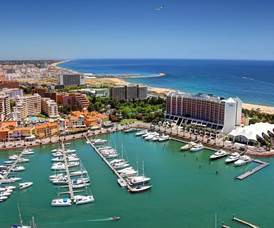
Vilamoura
Vilamoura the largest resort in the Algarve, Portugal Vilamoura occupies an area of approximately 2,000 ha and is one of the largest tourist complexes in Europe. A large part of this surface is made up of pine forests and a marine estuary. The firm that owns this tourist complex has an extraordinary environmental awareness and goes to great lengths to protect Nature from new construction. The sports and leisure infrastructure comprises 4 golf courses, a marina, a lawn bowling club, a tennis club, a target shooting club, a landing and take-off track for small planes and a riding school. The international casino and several nightclubs in the complex provide varied entertainment.
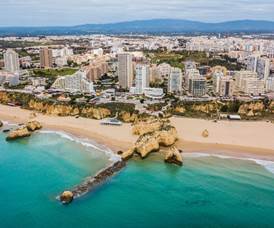
Portimão & Praia da Rocha
Portimão - the second largest city in the Algarve! Already in the times of the Phoenicians, the Greeks and the Carthaginians, Portimão was a small place of commerce and had a natural port at the mouth of the River Arade. During the time of the Arab occupation, the river represented for Silves - the capital of the Algarve at the time - the most important link with the sea. With the development of the fishing and canning industries, at the end of the 19th century, Portimão became an important economic centre. It is in the center of Portimão where the famous Praia da Rocha and Praia do Vau are located - which are known today as modern tourist cities with a strong commercial nature and a very popular nightlife, especially Praia da Rocha.
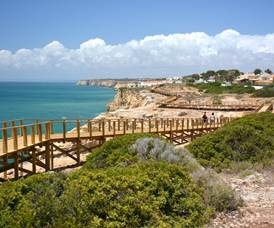
Alvor
Although this ancient coastal village is now a very popular holiday location the enclosed narrow streets have kept development to a minimum. Many of these streets now boast bars with live music and different types of restaurants, however leading off from these there are still memories of the older fishing village. The village is well located facing a natural lagoon opening onto the sea. There is a choice of a long open sandy beach or a number of small coves tucked under the cliffs. Places near to Alvor are the commercial town of Portimão, the famous popular beaches of Praia da Rocha and Praia da Vau, and the semi-nature reserve of Quinta da Rocha.
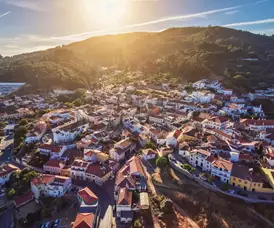
Monchique mountain & Caldas de Monchique
Monchique the Algarve, Portugal’s highest town With a few exceptions, Monchique has been happily untouched by the invasion of tourism in the last decades. It is located in a saddle formed by the two highest hills of the Algarve, Picota (774 m) and Foia (902 ml). The inhabitants of this town have maintained the rustic atmosphere, and the small dark doorways contain various artisan trades. Foia the highest elevation in the Algarve and in southern Portugal Fóia (902 m) is the highest elevation not only in the Serra de Monchique, but also in the whole of southern Portugal. The Serra’s mighty hills are visible from afar. The scarce vegetation of the peak plateau consists mainly of shrubs and various wild herbs.
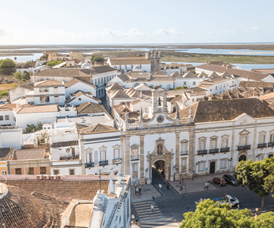
Faro
Faro is the administrative centre of the Algarve region The city has both Roman and Arab ruins, but most of the attractive older buildings have been built after the earthquake of 1755. During the 500 years of Moorish occupation the city, then named Ossónoba became an important trading port. Faro took over the role of the administration for the whole Algarve. The old part of Faro, still surrounded by Roman walls, is attracting tourists from all over the area. You can still see the open square that once used to be the Roman Forum. Interesting buildings are the 13th Century Cathedral, the Episcopal palace and the 16th Century Convent, now turned into an archaeological museum. At the sea side Faro is surrounded by the Ria Formosa, a nature reserve of 17.00 hectares and stopping place for migrating birds. The airport of Faro is connecting the Algarve with most European capitals by direct flights and handles several million passengers a year. The Ilha de Faro, whose correct name is Península do Ancão, is located on the western border of the Ria Formosa, stretching from Ancão beach near the world famous Quinta do Lago golf resort to Faro. It is known as Faro Island, despite being a peninsula. The next island to the east, separated by a narrow water channel, is Ilha da Barreta, also known as “Ilha Deserta” (Desert Island) because it is uninhabited. This Island is adjacent to Ilha de Faro on the eastern side. It can only be reached by boat from Faro and stretches over a distance of 10 km. The island is completely uninhabited and the ideal place to observe the unique flora and fauna of the Ria Formosa.

